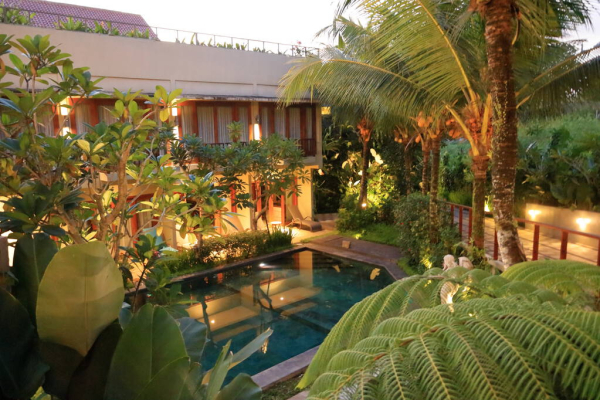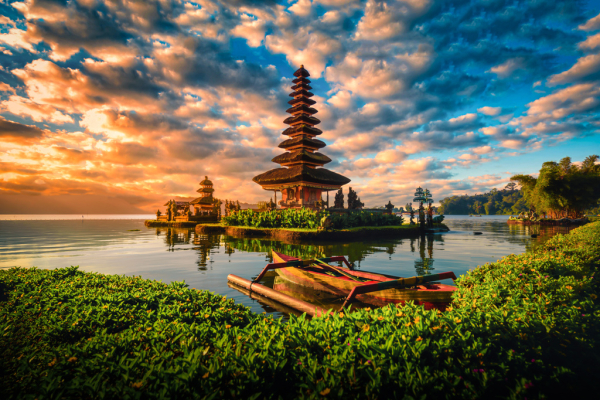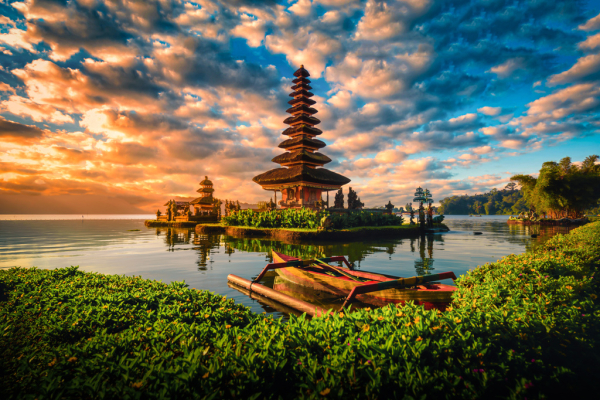Indonesia
GENERAL INFORMATION
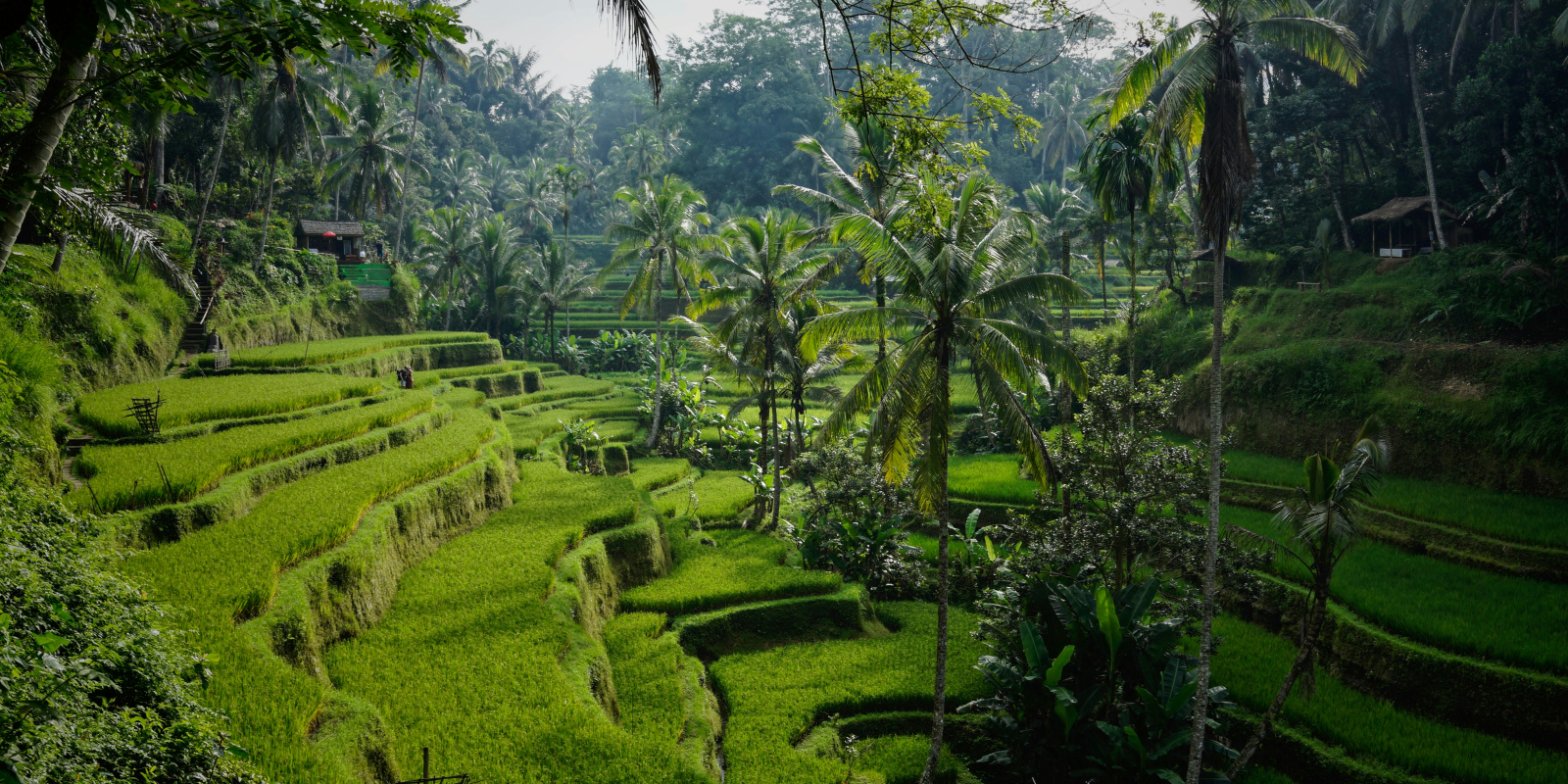
GEOGRAPHY AND CLIMATE
Bali is an island located in the Indonesian archipelago in Southeast Asia. It lies between the islands of Java and Lombok and is bordered by the Indian Ocean to the south and the Bali Sea to the north. The island covers an area of about 5,780 square kilometers and features a diverse topography, including both coastal plains and a central mountain range.
The island's most prominent peak is Mount Agung, an active volcano standing at 3,031 meters, which significantly influences the island's climate and ecology.
Bali experiences a tropical climate with distinct wet and dry seasons. The dry season typically runs from May to October, while the wet season lasts from November to April. Temperatures on the island range from 20°C to 33°C throughout the year. Humidity is generally high, particularly during the rainy season.
The surrounding seas are warm and comfortable for swimming year-round, with temperatures peaking towards the end of May and remaining warm until October.
ECONOMY AND INFRASTRUCTURE
Bali's economy heavily relies on tourism, which is the island's main source of income. The tourism sector significantly contributes to the local economy, providing numerous jobs and driving infrastructure development. In recent years, Bali has seen a growth in its tourism appeal, leading to an increase in hotels, restaurants, and entertainment venues.
In addition to tourism, agriculture and fishing play important roles in Bali’s economy.
The island is renowned for its rice terraces, as well as for growing coffee, cocoa, and spices. Bali’s infrastructure has been expanding to keep up with its economic growth. The island features the Ngurah Rai International Airport in Denpasar, which serves as a major transportation hub. Additionally, a network of roads connects various parts of the island.
However, traffic congestion, especially during peak tourist seasons, remains a common issue.
ECOLOGY AND NATURE
Bali is renowned for its stunning natural landscapes, which include lush rice fields, dense jungles, and impressive volcanic peaks. The island is home to a diverse range of flora and fauna, including rare bird species and exotic plants.
Environmental issues on Bali, such as waste management and water pollution, have become more pressing due to the surge in tourism.
Nevertheless, efforts to protect the environment, such as beach clean-up programs and marine conservation initiatives, are actively pursued. The island's underwater world is a paradise for divers.
Coral reefs and rich marine biodiversity attract diving enthusiasts from around the globe. Bali’s marine environments offer exceptional opportunities for underwater exploration.
ADVANTAGES OF LIVING IN BALI
Living in Bali offers a unique blend of natural beauty, cultural richness, and a tropical climate. The warm weather, beautiful beaches, and friendly local population create an inviting atmosphere for both residents and visitors.
The island has a low crime rate, and its healthcare system, while variable, generally provides good services, especially in tourist areas.
Bali also offers numerous cultural experiences through its traditional festivals, temples, and vibrant arts scene. It is popular among expatriates due to its affordable cost of living and high quality of life.
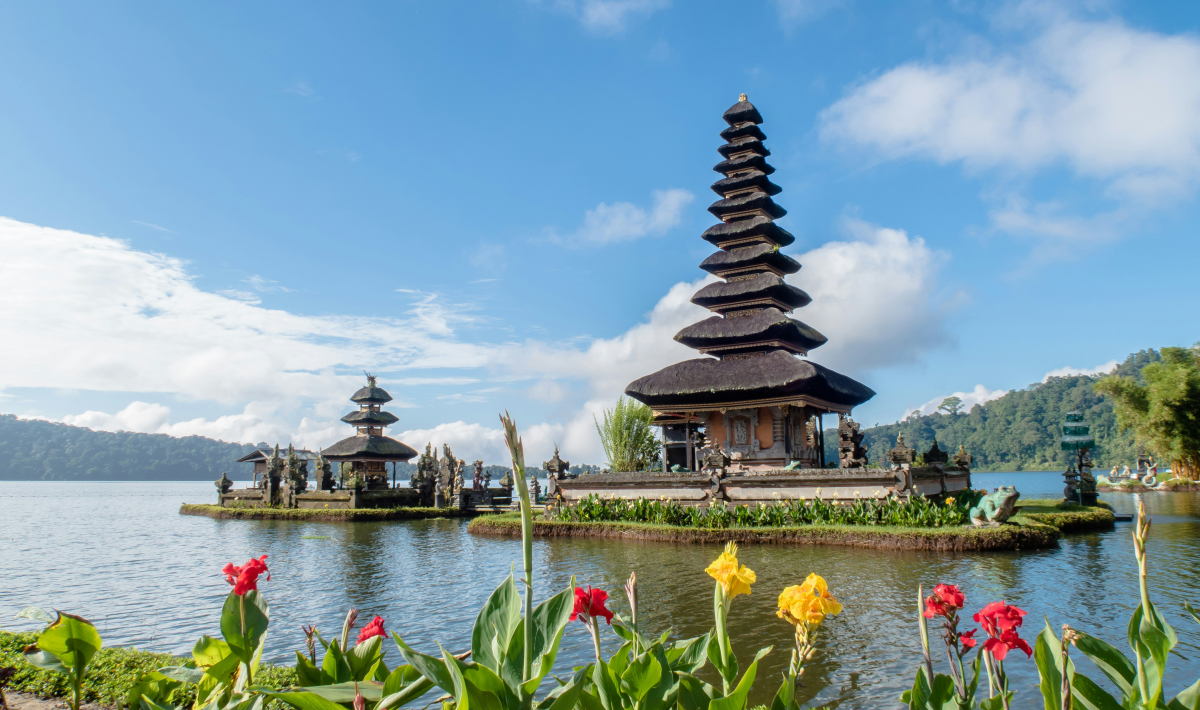
CULTURAL HERITAGE
Bali's cultural heritage is rich and diverse, heavily influenced by Balinese Hinduism, which shapes the island’s daily life and traditions. The island is known for its unique arts, including dance, music, and crafts.
Key cultural landmarks include Uluwatu Temple, perched on a cliff overlooking the ocean; Tanah Lot Temple, famous for its dramatic sunsets; and Gunung Kawi Temple, an ancient site carved into the rock. Traditional villages like Ubud are also notable for their art galleries and craft markets.
Bali’s festivals and ceremonies, such as Nyepi (Day of Silence) and Galungan, are vibrant celebrations that attract visitors and provide deep insights into local customs and traditions. These events highlight the island’s rich cultural tapestry and its significance within the broader context of Indonesian heritage.
.
Best real estate deals in Indonesia
Actual
News
By sending a message, you thereby accept the user agreement and confirm that you have read and agree to the privacy policy of this website.










